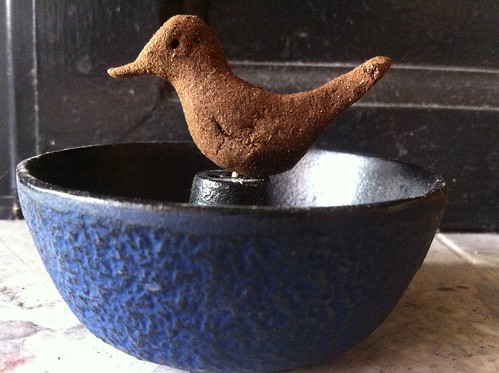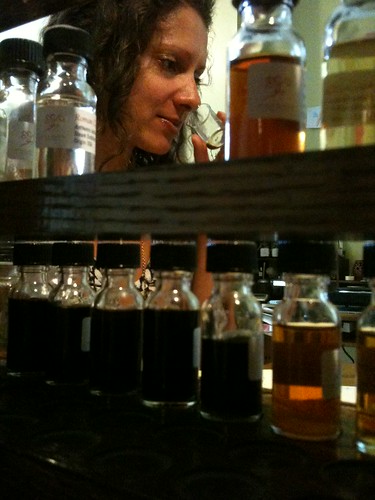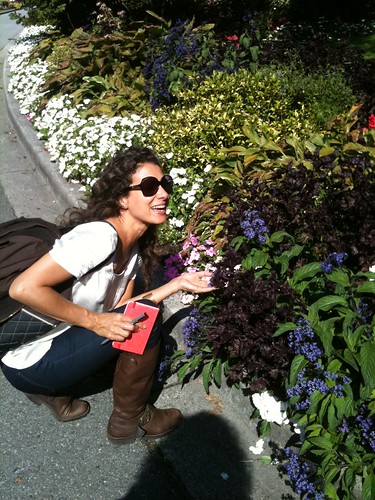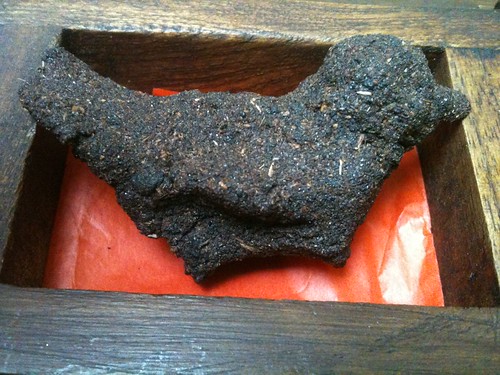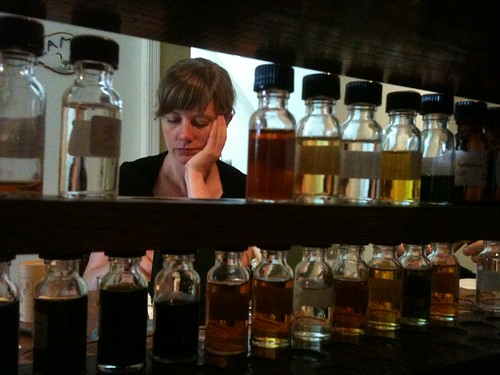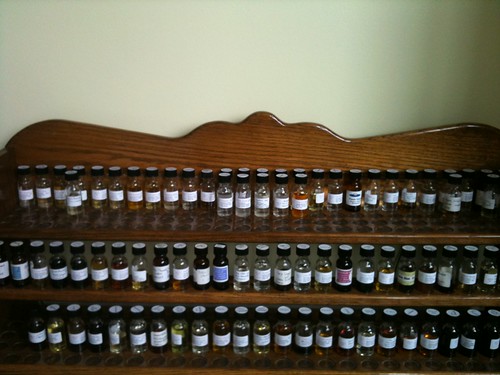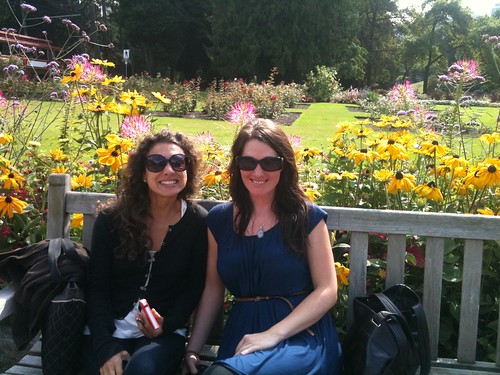Chypre Birds
Oyselets de Chypre ("chypre birds") historically preceded chypre perfumes. Made of a mixture of herbs and resins (labdanum, styrax, calamus) and glued together with gum tragacanth - they were place in homes as potpourri, or burnt for fumigating the space. They became popular in Europe after the crusaders arrived in the island of Cyprus (in the 12th century), and didn't turn into an alcohol-based "Eau de Chypre" till the 14th century - way before Coty's Chypre (1917).
In my Chypre course a couple of years ago, I've tried to retrace the steps of making Oyselets de Chypre based on this very vague information. We've used gum arabic as the binder to put together Mediterranean aromatics such as labdanum resin, sage, dried rose petals, calamus and patchouli. The material was difficult to work with and the gum arabic was not sticky enough to hold the shapes together. So only one student was able to make hers to look like a bird... The rest of the students left their "chypre balls" behind, in much frustration. Such is the life of the experimenting perfumer... Not all formulas work!
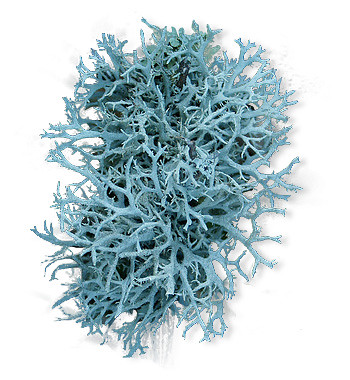
2 years later, I've decided to go back to those balls (which, by the way, make wonderful sachets to scent linens, stationary or drawers). I also had some left over powder of the herbs we mixed together before we added the water. I've decided to add a more reliable binder, as well as neroli water and a two other off-beat ingredients: a piece of dried oakmoss lichen, and a crumpled cigar.
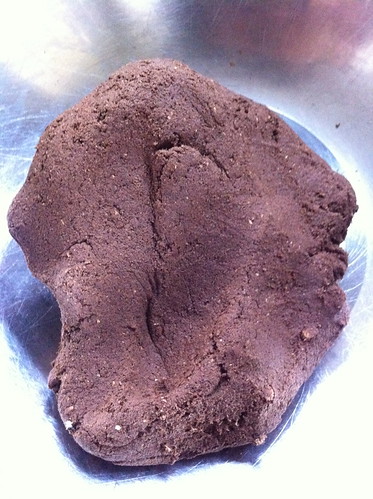
Working with the material was like working with wet clay, and smelled similar - wet and earthy, and a little like a wet cigarette. After a bit of molding, it dries on the fingers and personally makes me rather uncomfortable - itchy between my fingers and impatient to get on with the task... So I took a little break before I was able to go through the entire batch of "clay" (I covered the "clay" with plastic wrap to prevent it from drying).
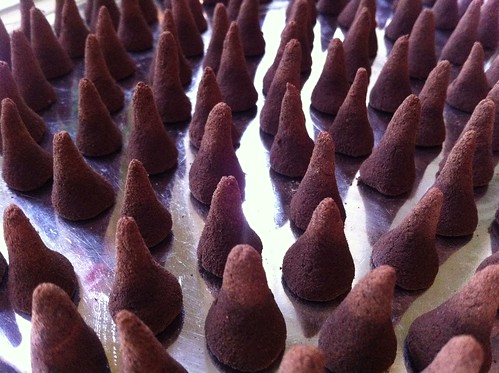
Once I shaped most of the paste into little incense cones, I made one shaped like a bird. Just for fun, and decoration. The incense is a mistake that turned into a happy accident: the oakmoss and tobacco in it really do the trick and make it smell wonderful... Assertive, woody, dry, masculine and smoky in a good way. I wish I could turn this into a perfume. It's kind of like how the moss Poivre Samarcand smells like underneath all the pepper. Truly wonderful stuff, and if my witch doctor is right, the tobacco helps to protect, encourage confidence and push away any negativity you don't need in your life.
If you want to learn how to make incense, you can book incense-cone making workshop with me (up to 6 people), or you can also learn how to make Egyptian Kyphi.
In my Chypre course a couple of years ago, I've tried to retrace the steps of making Oyselets de Chypre based on this very vague information. We've used gum arabic as the binder to put together Mediterranean aromatics such as labdanum resin, sage, dried rose petals, calamus and patchouli. The material was difficult to work with and the gum arabic was not sticky enough to hold the shapes together. So only one student was able to make hers to look like a bird... The rest of the students left their "chypre balls" behind, in much frustration. Such is the life of the experimenting perfumer... Not all formulas work!

2 years later, I've decided to go back to those balls (which, by the way, make wonderful sachets to scent linens, stationary or drawers). I also had some left over powder of the herbs we mixed together before we added the water. I've decided to add a more reliable binder, as well as neroli water and a two other off-beat ingredients: a piece of dried oakmoss lichen, and a crumpled cigar.

Working with the material was like working with wet clay, and smelled similar - wet and earthy, and a little like a wet cigarette. After a bit of molding, it dries on the fingers and personally makes me rather uncomfortable - itchy between my fingers and impatient to get on with the task... So I took a little break before I was able to go through the entire batch of "clay" (I covered the "clay" with plastic wrap to prevent it from drying).

Once I shaped most of the paste into little incense cones, I made one shaped like a bird. Just for fun, and decoration. The incense is a mistake that turned into a happy accident: the oakmoss and tobacco in it really do the trick and make it smell wonderful... Assertive, woody, dry, masculine and smoky in a good way. I wish I could turn this into a perfume. It's kind of like how the moss Poivre Samarcand smells like underneath all the pepper. Truly wonderful stuff, and if my witch doctor is right, the tobacco helps to protect, encourage confidence and push away any negativity you don't need in your life.
If you want to learn how to make incense, you can book incense-cone making workshop with me (up to 6 people), or you can also learn how to make Egyptian Kyphi.


